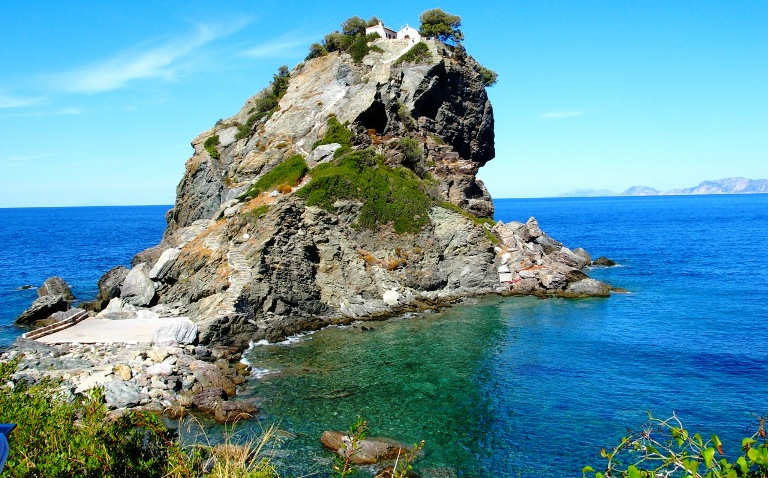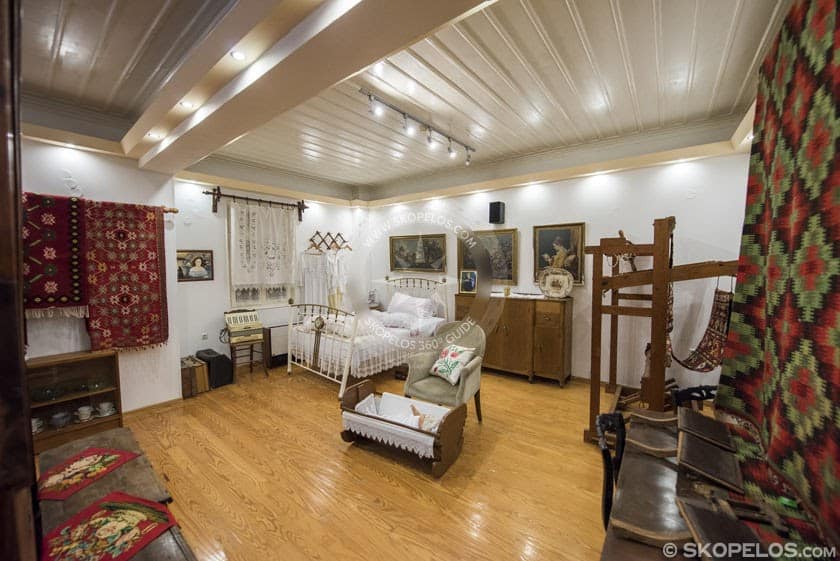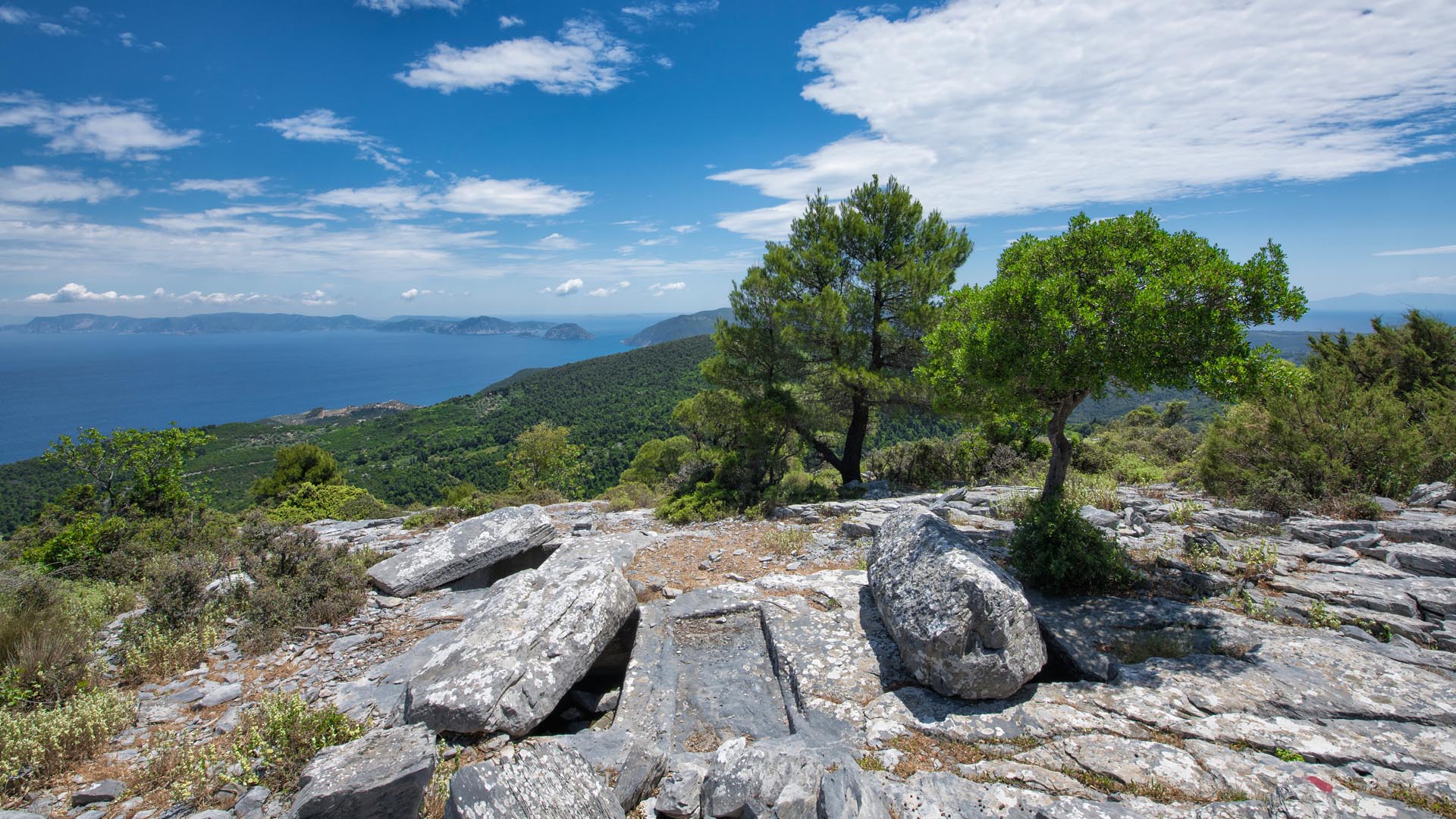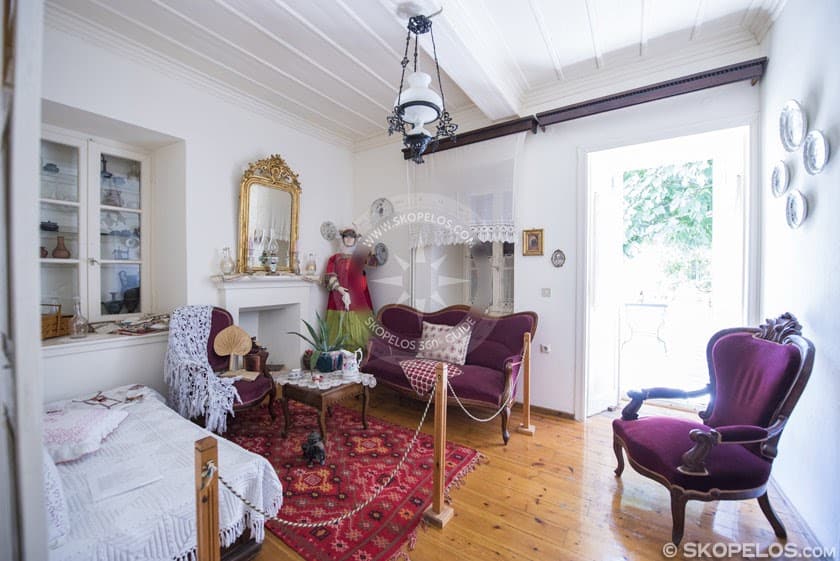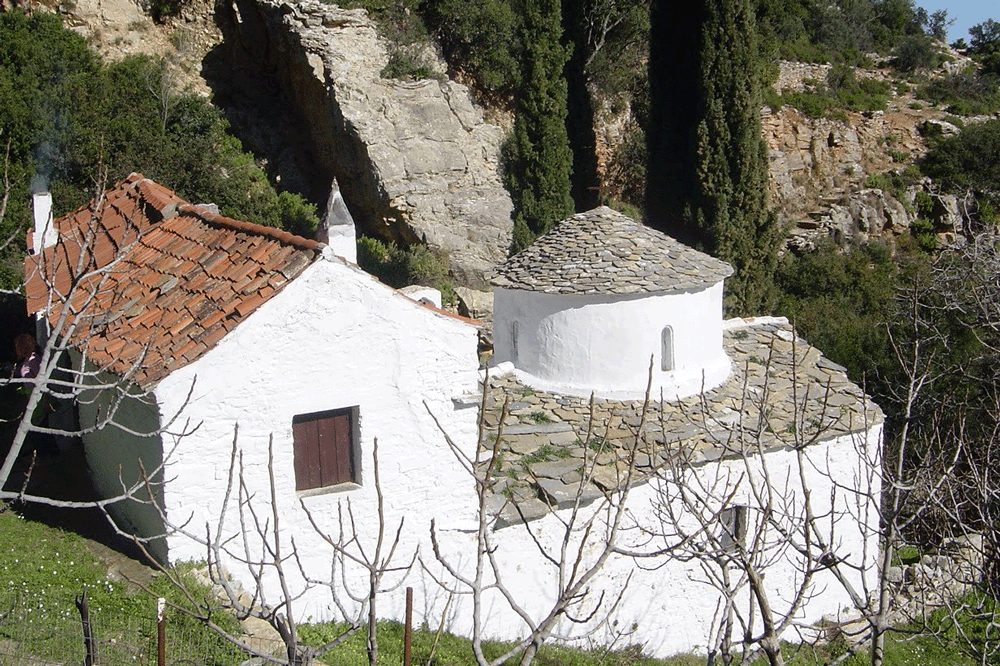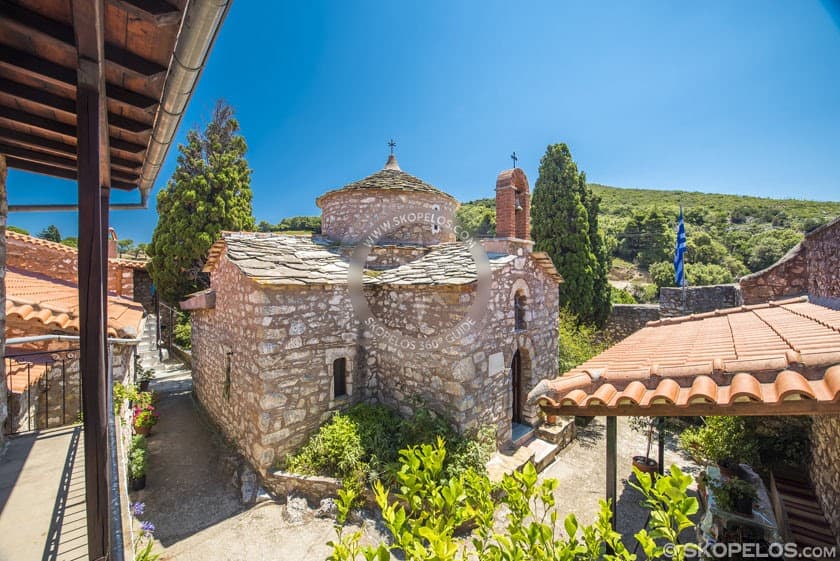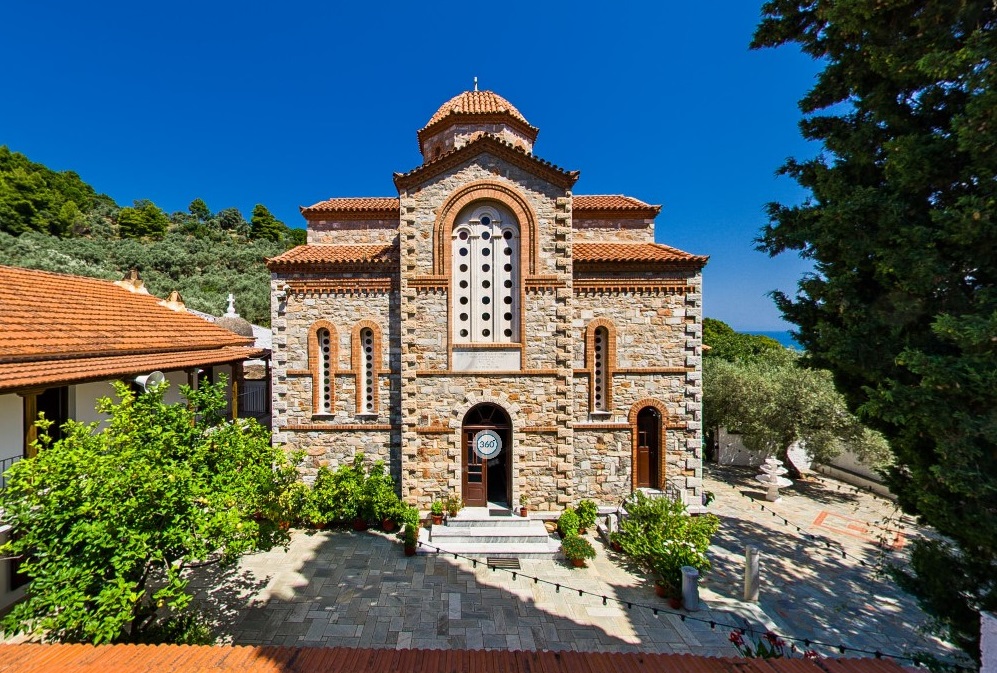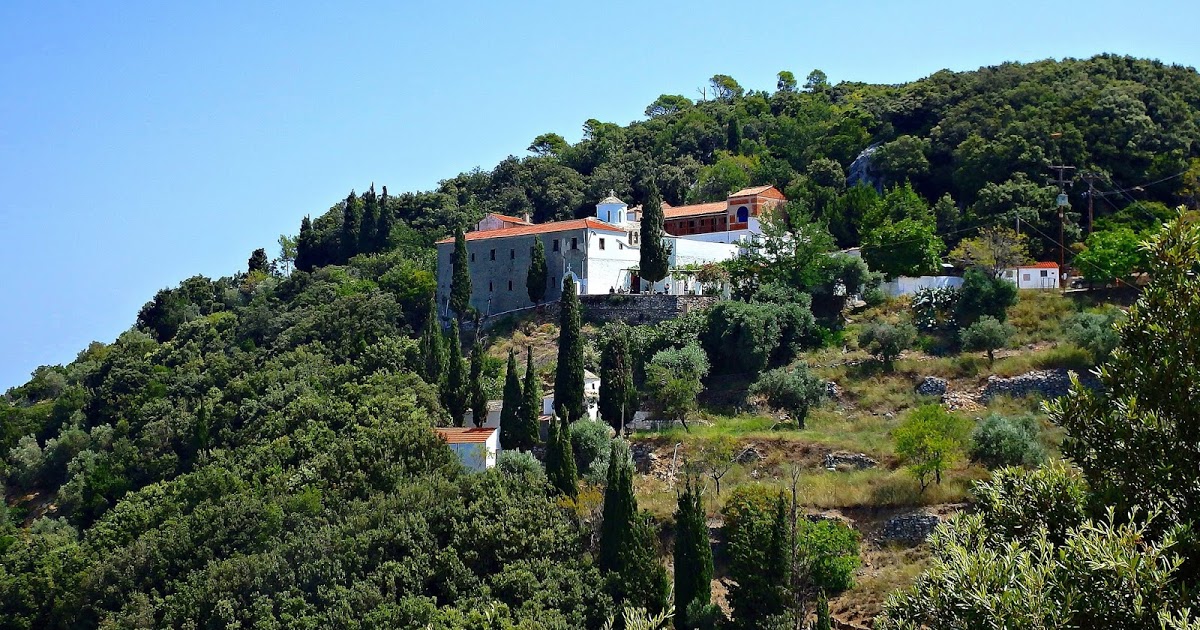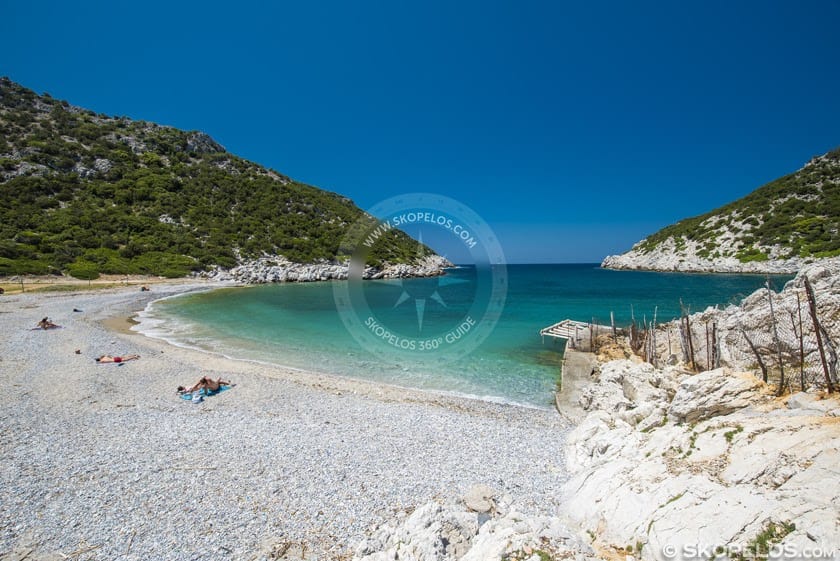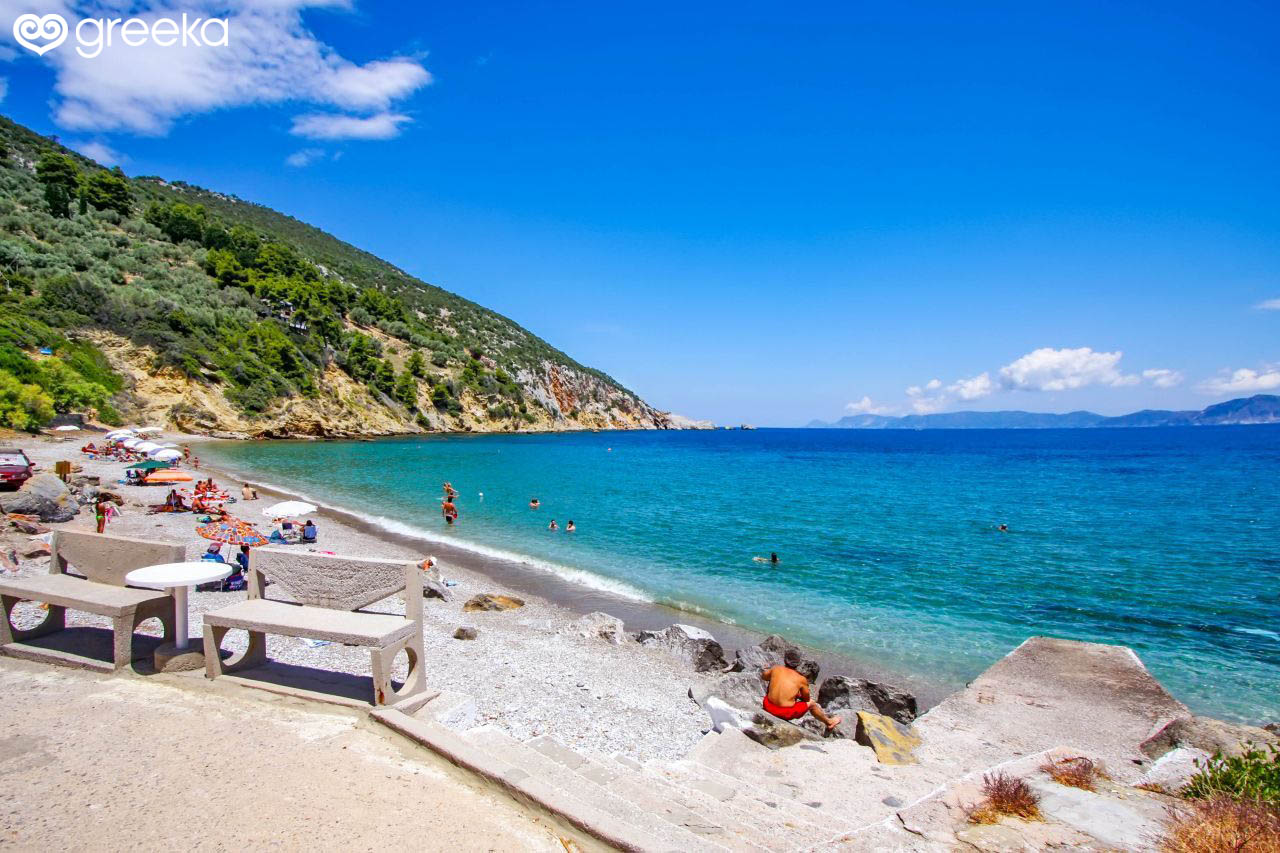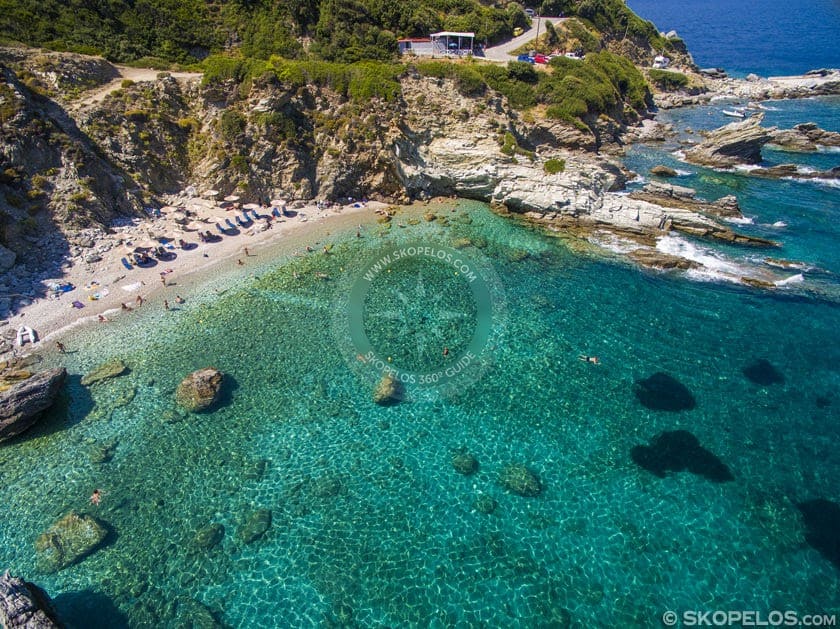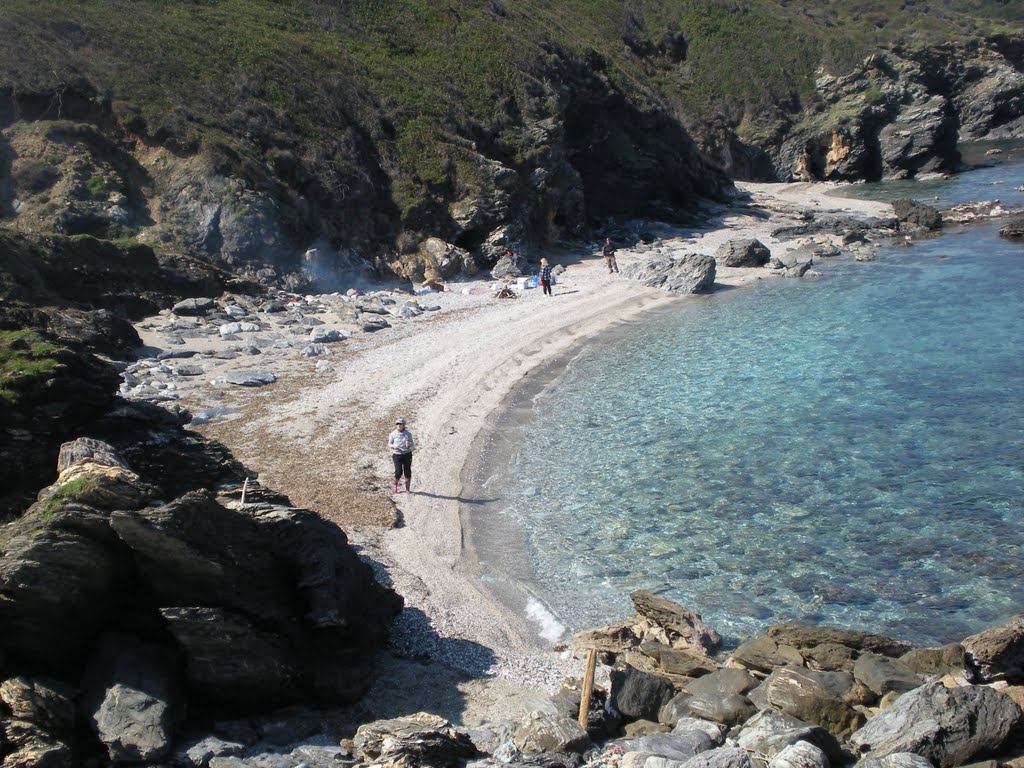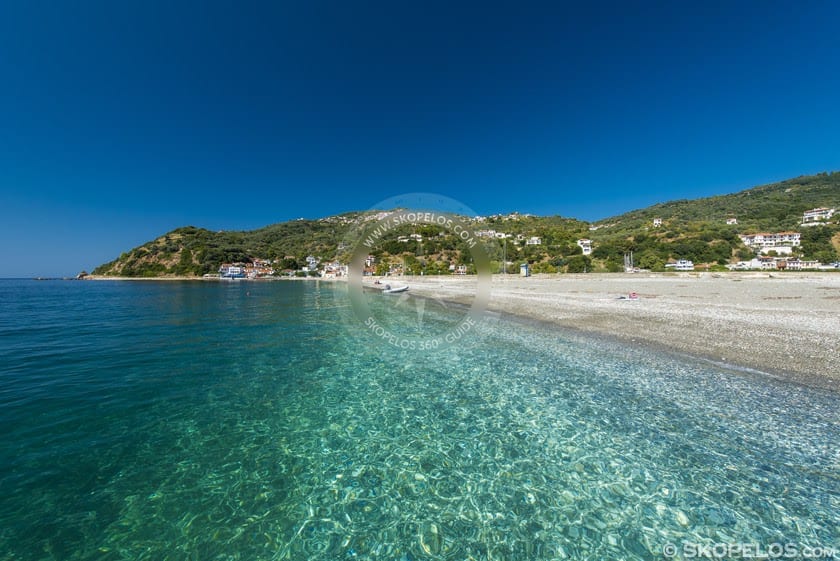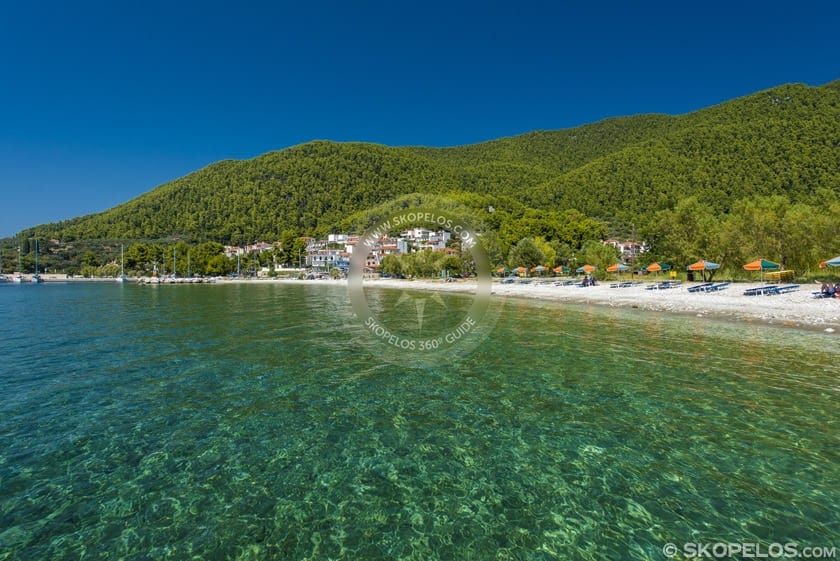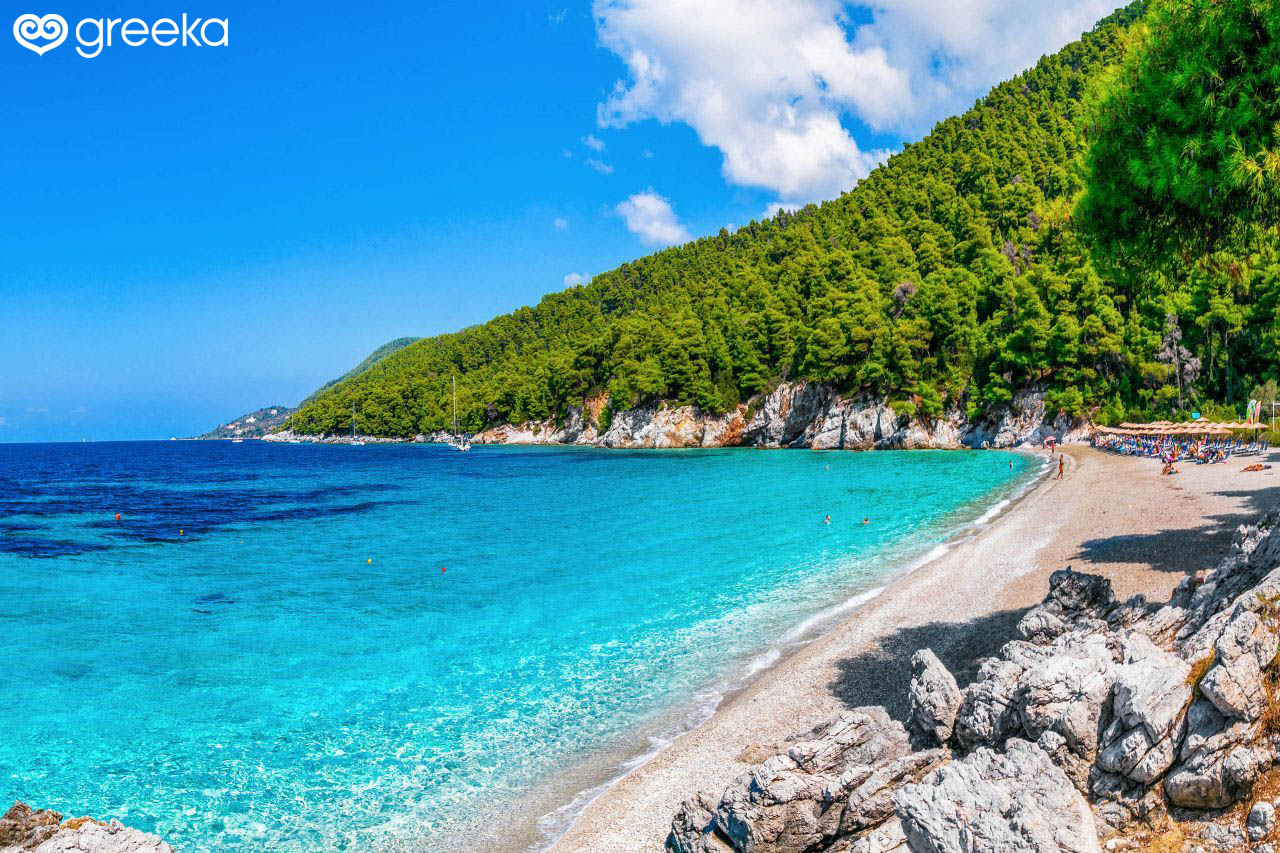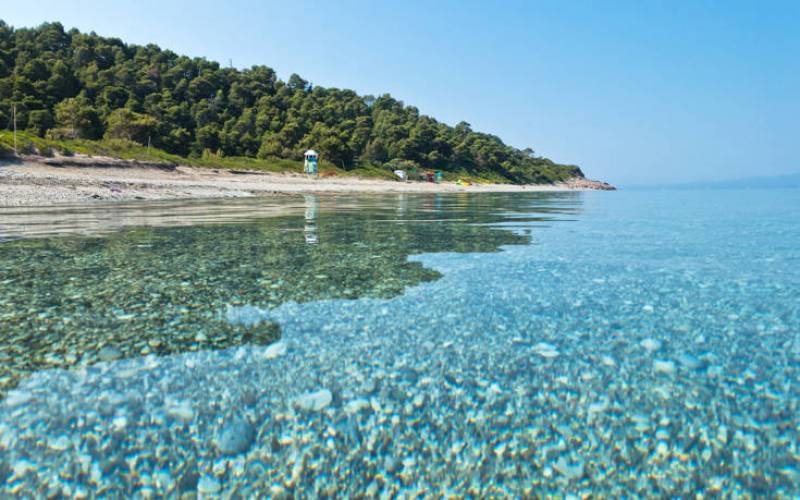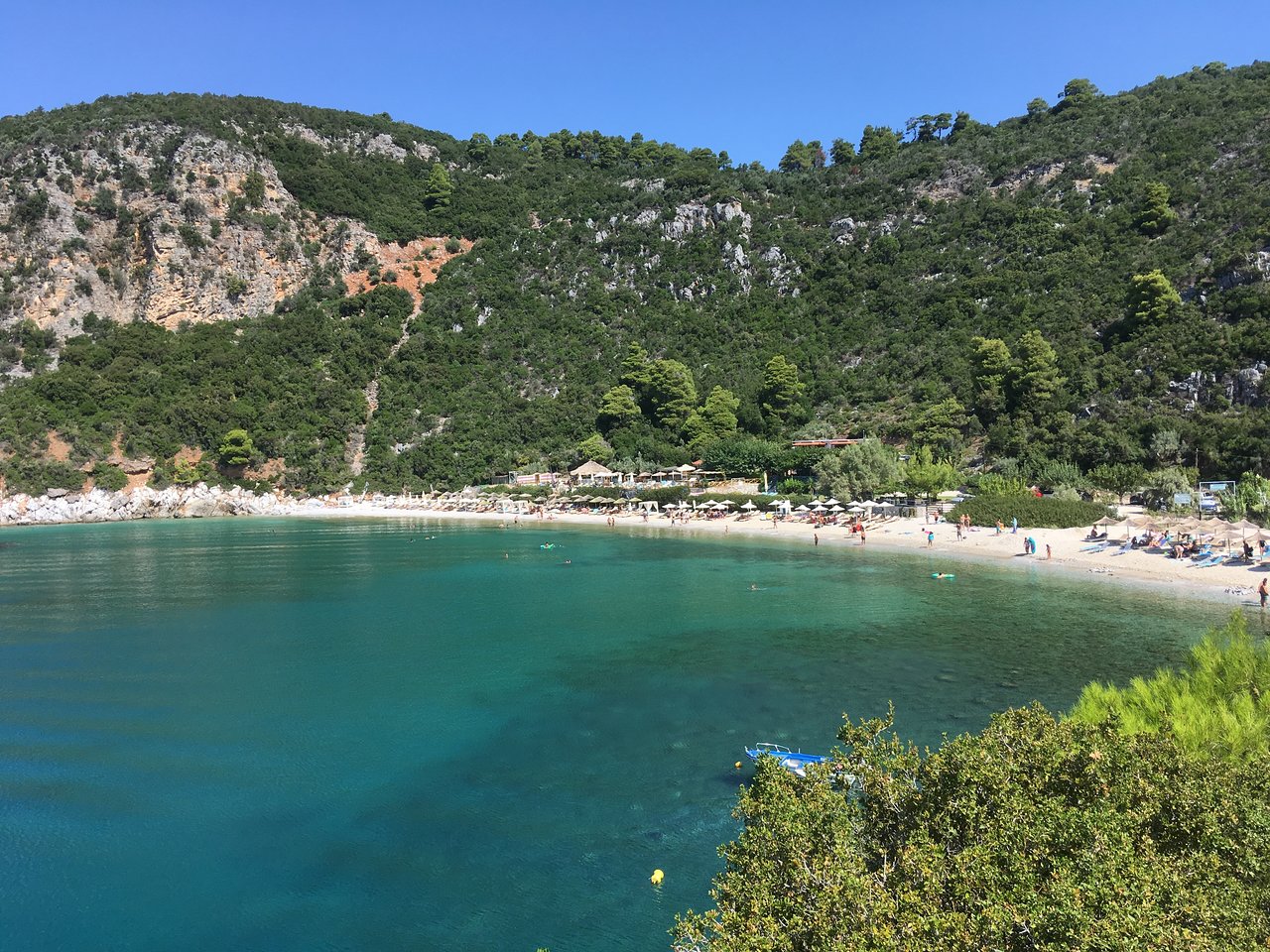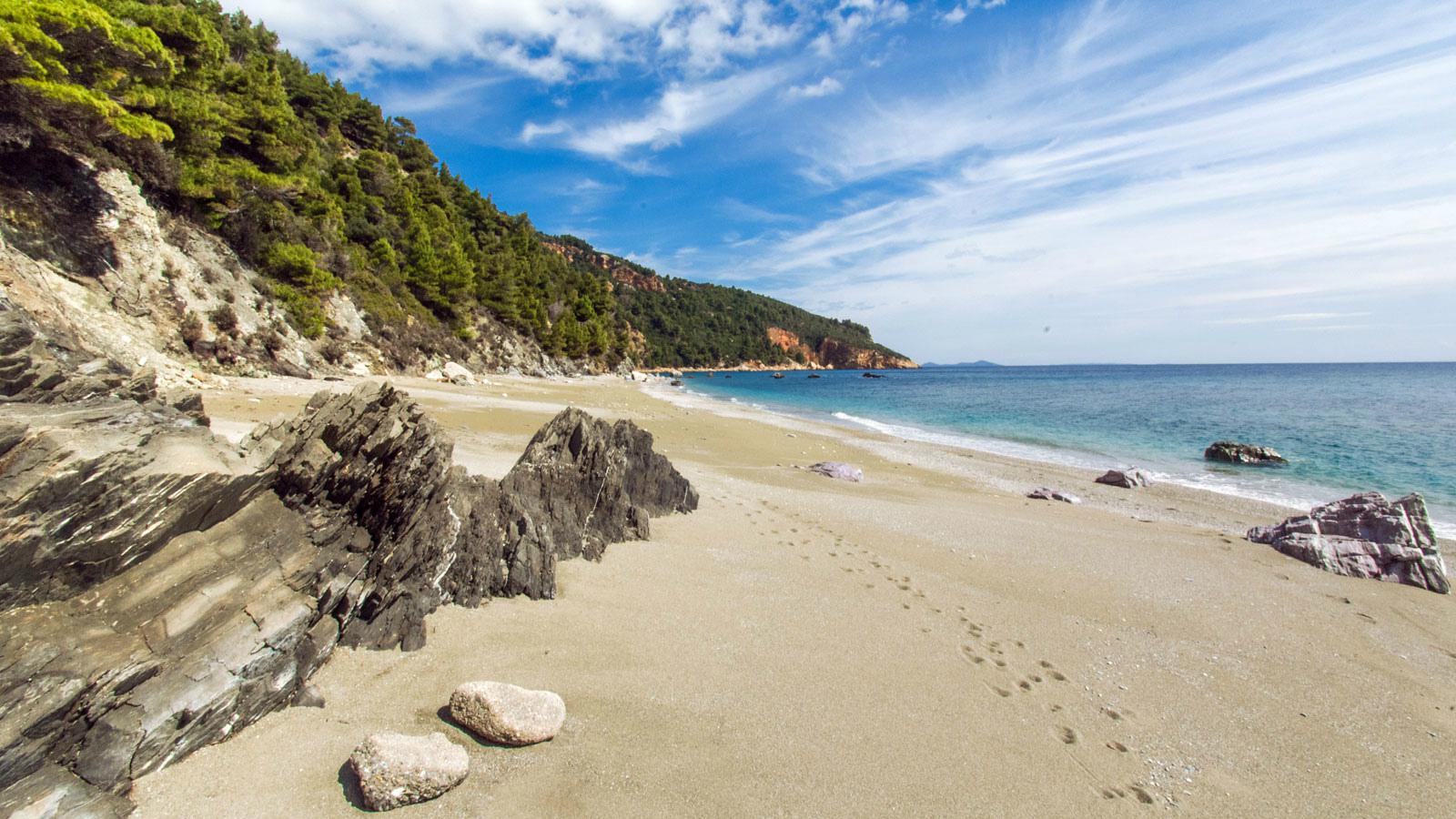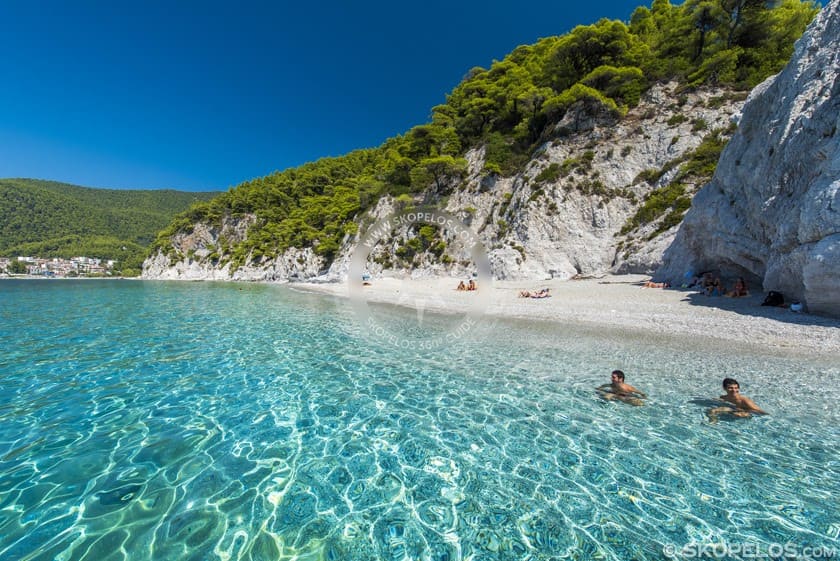Skopelos
History of Skopelos
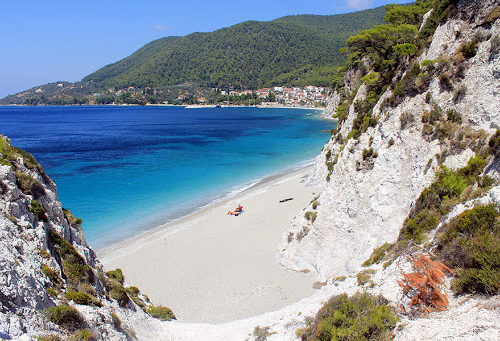
The first mention of Skopelos is made around 2800-2000 BC by Thucydides where it was inhabited by the pre-Hellenic Asia Minors of the Neolithic period. Around 1600 BC it was inhabited by the Cretans with Staphylos son of Ariadne and Theseus as king. The landing took place in the bay from where it was named Stafylos. Thus the capital of the island and the whole island was named after his half-brother Peparithos son of Ariadne and Dionysus. On the whole island there were four cities: Peparithos, Panormos, Knossos and Selinous.
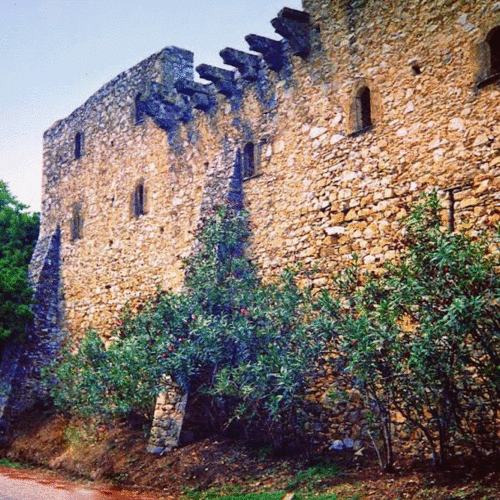
Ancient Peparithos participated in all its wars as it was a colony of Athens. They had a democratic state. He also had great athletes who took part in the Olympic Games. One of them was Agnontas who in 569 BC won the road race and since then in his honor was given his name in a bay, and remains to this day.
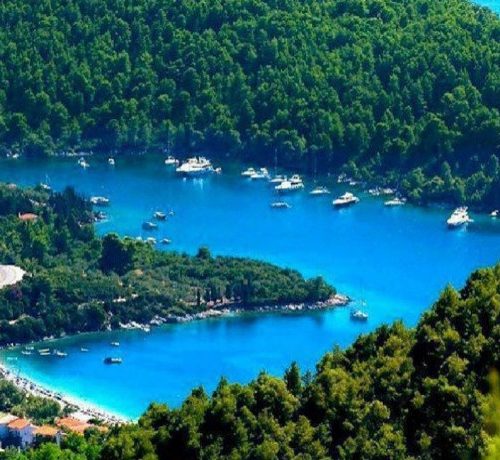
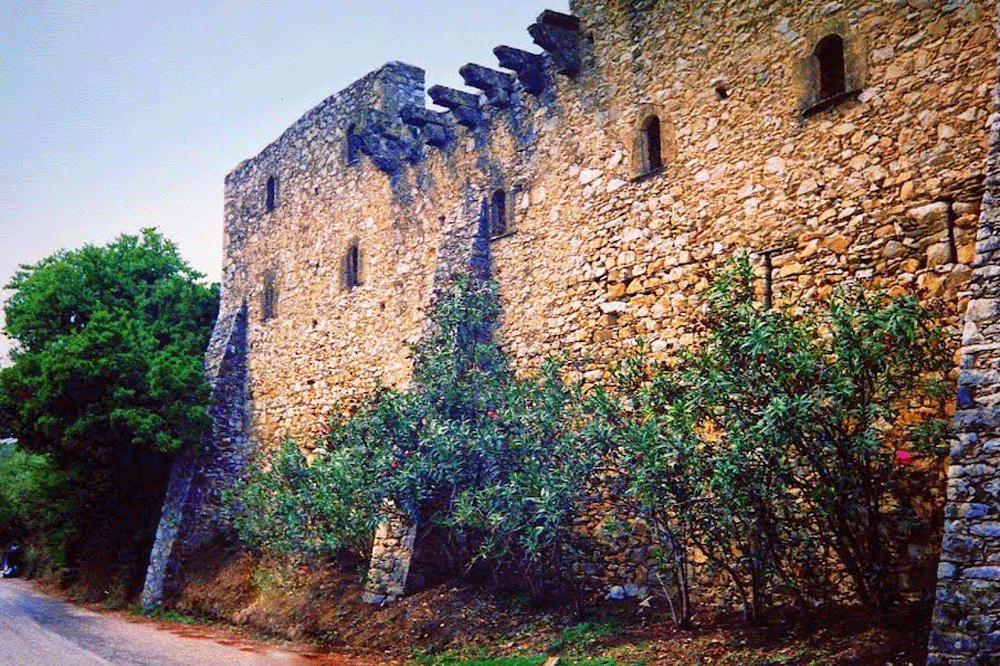
In the 13th century BC, King Ilkon of Pella conquered Peparithos, which remained stationary until the 6th century, when he began exporting olive oil and the famous wine, according to Aristotle, as an aphrodisiac wine. The first coin-operated machine, the well-known PEPA, was installed in Loutraki. Until 338 BC they remained allies with Athens but in the battle of Chaeronia the island was occupied by the Macedonians until 146 BC where they destroyed the fortification of Selinos to avoid its exploitation by the Roman conquerors.
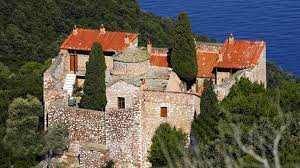
The current name of Skopelos appears in the 2nd century in the texts of Ptolemy and is due to the many reefs and reefs that exist around the island and make life difficult for sailors. As for the Language, there are 2 versions: one is that the name has been given by the linguistic shape of the cape and the second is that it may have been given in the 5th century AD by the seafarer and geographer Karyandeas Skyla of Ikariotis as Knossos and gradually became a Language . Finally, Selinous was named Loutraki due to the existence of ancient baths, part of which survive to this day.
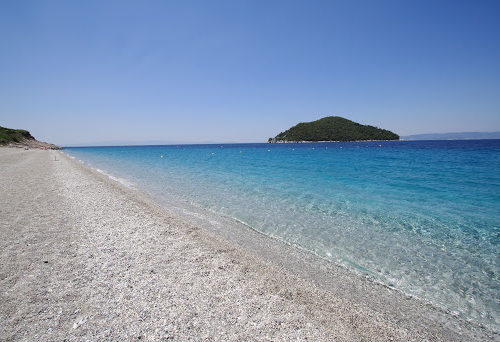
Sights
Let’s start with the main sights of Skopelos. Do you want to feel that you are in the middle of the Aegean? Are you interested in visiting the place where Donna Sheridan got married her true love? Do you want to sing “The winner takes it all” by Abba without being misunderstood? Then you must visit Agios Ioannis in Kastri. It is a tiny church at the top of a steep cliff, on the northeast side of Skopelos.
Directions: From the town of Glossa, head towards the provincial road Skopelos – Loutraki and after about 200 meters turn left. You can follow the signs for Agios Ioannis in Kastri. After a distance of about 5.5 kilometers you will get there.
The Folklore Museum of Skopelos, where the material testimonies of the place find a hospitable home, was founded in order to promote the cultural wealth of the island and to create a spiritual core worthy of its traditions and history.
The building where the Folklore Museum is housed today, was donated in 1991 by the Nikolaidis family in the Municipality of Skopelos.
The old building was built in 1795 and was maintained until 1963 when during the then great earthquakes in Skopelos its first and second floors collapsed.
In 1971 the building was rebuilt based on the plans of the old building and took the form it has today, retaining all the characteristic elements inside and outside of the traditional style of the settlement which you consider legally preserved.
The Folklore Museum of Skopelos opened its doors to the public in August 1992, thus giving life again with its activity in the old mansion of the last century.
The carved tombs in the Chests, Many stories are heard about hidden treasures located on the cliff that reaches the sea. Is it true? Nobody knows, but what we do know for sure is that these are four unique ancient carved tombs, probably from the Roman or Early Christian period.
They are located on the mountain Karya of Skopelos (just above the Monastery of Agios Efstathios).
They are located on the mountain Karya of Skopelos (just above the Monastery of Agios Efstathios). Two of the tombs are parallel to each other and are separated by a third which is unfinished and another which is parallel to the three and is located two meters away. The three completed tombs have covers of 2.5 meters of monolithic slabs and an inverted sign of looting was found.
You will get there from the dirt road to Karya (where the spring with the best water of the island is located). You will find many signs. Suddenly the road stops, leave your car or motorbike and following the various red signs that will be on the stones next to the narrow path that leads to the tombs, you will reach the chests.
From there you will have the opportunity to gaze at Alonissos, Evia, Skiathos and Pelion. If you are lucky, with good clarity, your eye will reach Halkidiki and Olympus.
Most of all it is worth walking in nature for those who love to walk and especially not to have heat, for example spring and autumn is a good time.
Among the important sanctuaries of the city of Peparithos is its Asclepieion, on the southeast side of the bay of Skopelos, in the place “Livadi – Ampeliki”, which was identified thanks to the finding of an inscribed votive base dedicated to Asclepius.
In 1961, walls of ancient buildings in the area were discovered for the first time, but within a few years they were destroyed by the sea. Recent excavations at the same site have uncovered an extensive building complex, the location of which as well as various movable finds, including a seal with the inscription ASKL on a shell, suggest that it is a sanctuary of Asclepius.
The Asclepieion of Skopelos is considered the oldest in the Aegean.
The archeological dig has so far revealed amphorae, red-figure Attic vessels, parts of statues and clay figurines and coins, dating the sanctuary from the 4th century to the Hellenistic times. Based on these findings, it seems that sanctuaries of other gods were eventually attached to the main sanctuary.
A kiosk was recently created at the archeological site of Asklipieio, where a small number of finds are exhibited for visitors.
At Episkopi, two kilometers south of the town of Skopelos, was the seat of the bishop of the island from early Christian to modern years.
The complex of the Diocese in its current form is a Venetian building.
In the center is a small one-room church of the 16th – 17th century, built on the ruins of a large three-aisled mid-Byzantine basilica.
This basilica, according to a marble inscription, was built, probably on the site of an older one, by the bishop of the city, Anastasios, and was inaugurated in the year 1078.
The present church is surrounded by an impressive stone enclosure, which on its east side incorporated a wall of a large and imposing fortress-shaped building.
This wall is probably the facade of the episcopal palace, which began to be built during the Venetian period and for unknown reasons, remained unfinished.
Two rows of windows and many loopholes open on the wall, while in the center of the upper floor are preserved the stone pillars (pillars) of the balcony, balcony with carved animal figures.
In the area of the Diocese, excavations were made by Professor Mr. Xyggopoulos and many ancient finds were discovered, which are exhibited in the courtyard of the Church.
Churches
Monastery of Agios Taxiarchis in Vatos, The Monastery of Agios Taxiarchis was built on the eastern slopes of Mount Palouki. It is located in the shade of a plane tree and is “cooled” by two sources. One is built and is located to the right of the entrance, while in the second water gushes from the rock behind the monastery.
The katholikon of the monastery is a single-aisled basilica with a dome. The owner of the monastery was the scholar Caesar Dapontes, who founded it in 1761.
The church was decorated with an old wooden iconostasis that was replaced after the earthquakes of 1965 with a newer one.ο που αντικαταστάθηκε μετά τους σεισμούς του 1965 με νεότερο κτιστό.
However, some icons are still preserved in the sanctuary, including that of Agios Taxiarches.
Just before you reach Glossa, you meet on your right hand side, a road that leads to the church of Agios Ioannis in Kastri. The church of Agios Ioannis is located at the top of a rock about 100 m high. and to reach it one has to climb about 106 steps carved on the rock.
Before the road reaches the sea, in the church of Panagia there is a fountain with water.
The visitor climbs a well-protected staircase carved in stone. From the top the view to the sea is magnificent. The small, almost solitary beaches with the turquoise waters between the gray rocks add another note of beauty to the area.
They go to the festival every year, as long as their guts are strong… The road ends… A row of people, one world close to the other go up the stairs. Every step and pilgrim. Every pilgrim and tears. A few more steps and they arrived in front of the church square.
A small image decorated with fresh flowers and next to a manual with a multitude of lighted candles that shone everywhere. Sitting next to him was Pope Sideris, a patriarchal patriarch with a white beard looking everywhere with his sweet, fast-moving eyes.
The islanders approach him and kiss his hand. On the paper they give the names to mention… With a sweet smile he accepts everyone, everyone. He calls them by their first name. He knows them all, a priest life in the village. Get to know their joy and sorrow. He baptized, crowned and buried many with sorrow. Like the good spiritual doctor he diagnosed the pain of the soul and tried to alleviate it.
AGIOS RIGINOS and Monastery: Agios Riginos lived in the 4th century AD. He was of Greek origin and received the education of his time with the help of his parents.
At the same time, however, he had the desire to come closer to Christ and to live according to his will.
The fame of his holiness reaches the island of Skopelos and the inhabitants desire and manage to become the bishop of the island and their spiritual guide.
As bishop of Skopelos he participated in the Sardinian synod and together with more than 300 other high priests condemned the sect of Areios.
When the emperor Julian the “transgressor” persecuted the Christians, Agios Riginos was given the opportunity to fight for his faith and the faith of the people of Skopelos, setting an example with his personal sacrifice and testimony.
He was tortured to renounce his faith in Christ, and in the end he was probably beheaded along with forty other Skopelos orthodox martyrs of the Orthodox faith, according to Professor Nick. Georgaras.
Monastery of Agios Riginos
Έξω από την πόλη, 4 χμ ΝΔ, βρίσκεται η εκκλησία του Άγιου Ρηγίνου, πολιούχου της Σκοπέλου . According to an inscription, it was built in 1728, probably on the ruins of an older, Byzantine monastery. The current church was built in the 1960s. In the courtyard of the monastery there is the sarcophagus of the Saint, the first bishop of the island, who martyred in the 4th century AD. There are cells in the SW corner of the monastery, while nearby there is a fountain.
The monastery of Evangelistria is located on the slope of Mount Palouki – in a place with excellent views – and its fortress appearance is associated with pirate raids.
It was built in 1712, on the ruins of an older Byzantine Monastery of 1676, by Hatzi-Stefani Daponte (father of Caesar Daponte) and belongs to the Monastery of Xiropotamos on Mount Athos.
Today there are nuns in the monastery. You can visit the monastery daily 08.00-13.00 and 17.00-19.00. We should mention here that this schedule is generally valid for the other monasteries of Skopelos that are inhabited.
In the large inner courtyard you will find a covered fountain that mentions Caesar Daponte as the owner of the Monastery as well as a small exhibition with various utensils and icons.
The monastery has old icons of the 14th century and its iconostasis is covered with gold leaves (built in a workshop in Istanbul) and is decorated with representations of plants and animals as well as representations from the Old and New Testaments.
The foundation and prosperity of the Monastery are directly connected, as mentioned, with the large Daponte family. Apart from the testimonies of the learned Skopelitis monk, no other written source survives to inform us about the founding and renovation of the monastery.
According to Caesar Daponte, in the code of the monastery that he compiled, in the place where the current monastery is located, there used to be another smaller one which belonged to the Daponte family and specifically to the father of Hatzis – Stefanis, Ioannis Grammatikos.
Monastery of Timios Prodromos: The Monastery is located just 300 meters from Agia Varvara, on Mount Palouki. Favorite Monastery of all the locals with its benevolent nuns who still take care of the monastery.
It was renovated from the foundations in 1721 by the monk Filaretos, according to the inscription at its entrance.
The Monastery until 1920 was male, but since then it is female.
It was built in 1712, on the ruins of an older Byzantine Monastery of 1676, by Hatzi-Stefani Daponte (father of Caesar Daponte) and belongs to the Monastery of Xiropotamos on Mount Athos.
In this monastery he had the desire to consecrate Saint Nektarios, but in the end he stayed in Aegina.
In his letter to Saint Xenin, sent in December 1907, he writes in this regard: fulfilled these, living in Aegina “.
It has a wood-carved, gilded, high iconostasis with rich decoration of vines, birds, animals and 15 icons with the big festivals and consists of two pieces, one of the 14th and the other of the 18th century, while its frescoes are of the 14th-15th century.
The icons of the Monastery dating to the 16th, 17th and 18th centuries AD are also important.
In the bank of the Monastery there is a mural related to the founding of the Monastery. The niche depicts Deisi and on either side of it Saint Charalambos and Filaretos Hieromonk and Founder.
The monastery celebrates on June 24 and the day before, vespers take place in the monastery.
Beaches
Is there an idyllic beach with crystal clear waters, small pebbles and pines that embrace with their coolness and shade? This enchanting landscape is called Glysteri and is located north of Skopelos. The small but beautiful beach of Glysteri became famous because several scenes from the Hollywood movie “Mamma mia” were shot there. It is the ideal beach for tranquility and seclusion.
A rocky peninsula leads to a lush bay with pebbles and clear waters. Due to its location, Glysteri beach in Skopelos is protected from the winds. To reach the beach you will pass through a wonderful picturesque olive grove.
Next to Glysteri beach you will find the special Tripiti Cave.
In Glysteri, the actors of the film had placed Villa Donna, where many external shootings of the film “Mamma mia” took place. Villa Donna does not exist, so you will not find it there. The entrance of the Villa was created with styrofoam for the needs of the film. After the end of the shooting, they were removed.
Η παραλία Γλυστέρι απέχει 4,2 περίπου χιλιόμετρα από την χώρα και το λιμάνι της Σκοπέλου. Οδικώς θα χρειαστείτε 10 περίπου λεπτά για να φτάσετε στην παραλία. Η πρόσβαση στην παραλία Γλυστέρη είναι εύκολη. Ακολουθείτε τον περιφερειακό δρόμο που οδηγεί στο Κάστρο της Σκόπελου. Επίσης υπάρχουν καραβάκια που κάνουν την διαδρομή από το λιμάνι της χώρας της Σκοπέλου. Οδικώς θα χρειαστείτε 10 περίπου λεπτά για να φτάσετε στην παραλία. Η πρόσβαση στην παραλία Γλυστέρη είναι εύκολη. Ακολουθείτε τον περιφερειακό δρόμο που οδηγεί στο Κάστρο της Σκόπελου. Επίσης υπάρχουν καραβάκια που κάνουν την διαδρομή από το λιμάνι της χώρας της Σκοπέλου.
Saint Constantine Glyfoneri. On the north side of the island, near Skopelos Town, are the beaches of Agios Konstantinos (or Glyfoneri) and Glysteri. The beach of Ag. Konstantinou is sandy, with clear waters, organized and is a good alternative for a quick swim, given the short distance from the settlement, which is why it is quite popular with the locals. It is the cleanest of the beaches near the town of Skopelos .
But when the north wind blows, it will have ripples.
It took its name from the Church of Agios Konstantinos located on the hill above the beach.
This spot early in the morning offers a magnificent sunrise.
Distance from Skopelos Town (Port) 2.6 km about 8 minutes by car.
Just before entering the village of Glossa, you will see a road on your right that leads to the church of Ai
Giannis, in Ai Giannis Kastri as it is called, which is located on top of a high rock.
The approach to the church requires you to climb around 105 steps, but it is worth it.
There are two small beaches, with rocks and wonderful waters.
You will reach them on foot (mainly the first one), leaving the car on the main road, near the small canteen that exists there. One of the two is easily accessible so if you pass next you will have to climb the rocks or swim.
If there is a wave (north winds) it is better to go to one of the West or South beaches (such as Milia Kastani Hovolo Panormo Limnonari etc) which will have calmer waters and will not be mixed from the north. wonderful and the landscape is enchanting
Distance from Skopelos Town (Port) 30.0 km about 43 minutes by car. (from the road of Agios Riginos)
Distance from Skopelos Town (Port) 34.6 km approximately 47 minutes by car. (from the road Stafylos – Agnontas)
Distance from Skopelos Town (Port) 24.9 km about 40 minutes by car. (from the road Glysteri – Karya Mountain Delphi)
On the northeast side of the island, near the village of Glossa, there are also some beaches, less easily accessible than those on the south side, but of exceptional and wild beauty.
Following the asphalt road that starts from Glossa and reaches just above it, you will reach Perivoliou beach.
Following the small path with the concrete steps you will find yourself on a beautiful beach, with clear blue waters and impressive rocks that cast their shadow on the shore.
Due to its location, however, the beach is influenced by the north winds.
Just before you reach the beach, you will see on your right a carved and painted stone.
Go down for a walk in the idiosyncratic Acropolis that barba Stelios Karvelis had built. His works, made of carved stone, are scattered throughout the estate and depict the family of Barba Stelios.
The beach since 2016 also has a canteen.
Distance from Skopelos Town (Port) 30.0 km about 46 minutes by car. (from the road of Agios Riginos)
Distance from Skopelos Town (Port) 35.4 km about 50 minutes by car. (from the road Stafylos – Agnontas)
Distance from Skopelos Town (Port) 25.8 km about 43 minutes by car. (from the road Glysteri – Karya Mountain Delphi)
Near Perivoliou is the beach Chondrogiorgi. This is a beach that consists of small coves with rocks in the sea.
You will leave your car in the small parking lot above the beach and you will go down the easy path.
Fine pebbles, rocks and blue waters complete the scene.
Because the beach is not organized, it is good to have water and everything else that is necessary.
And this beach when the north wind blows it is better not to choose it.
If you swim to the rocks on the left you will be able to reach the beach of Petameni which has the most beautiful seabed and color of the sea from these 4 beaches (Perivoliou & Aggeletou, Pethameni, Chondrogiorgis).
If it is to choose one of the Perivolion or Chondrogiorgi better to choose the Perivolion.
The beach at Loutraki of Glossa is located on the outside of the small port of Glossa called Loutraki. It has clear waters and is quite large.
On the inside is the port of Glossa called Loutraki and on the Aegean side the beach. On the other side is the beach of Katakalou next to the Roman Baths.
It has very nice pebbles and beautiful orientation and nice sunsets here too.
Also very picturesque taverns aside.
There are also cafes in Loutraki.
It is an easy choice for swimming, especially for those who live in the small settlement in Loutraki.
Distance from Skopelos Town (Port) 28.5 km about 41 minutes by car. (from the road of Agios Riginos)
Distance from Skopelos Town (Port) 33.1 km about 45 minutes by car. (from the road Stafylos – Agnontas)
Distance from Skopelos Town (Port) 23.4 km about 38 minutes by car. (from the road Glysteri – Karya Mountain Delphi)
Neo Klima There is a beach along the entire length of the village ELIOS, sections with small pebbles, a beach with larger ones, with stones and sand standing out as we mentioned the amazing Hovolo. Clear water here too.
The beaches of Neos Klima have a western orientation and the sunsets are wonderful from this point as well.
Also available newly built marina and slip for boats.
For those who have inflatable slides and ports there are still in Skopelos Town 2, Agnontas 1, Neo Klima 1 and Loutraki 1.
The beach that is located on the right side as we look towards the sea has a better seabed, while on the left side there is a beach there but the beach of Hovolos stands out at the edge.
In Neo Klima there are also taverns for food and a playground.
Distance from Skopelos Town (Port) 18.8 km about 25 minutes by car. (from the road of Agios Riginos)
Distance from Skopelos Town (Port) 23.4 km about 30 minutes by car. (from the road Stafylos – Agnontas)
Distance from Skopelos Town (Port) 13.9 km about 23 minutes by car. (from the road Glysteri – Karya Mountain Delphi)
Next to Milia is Kastani (Kastani) (21 km from Skopelos Town, 15 km from the shortest road), a beach that became famous from the movie Mamma mia, as many of the shootings of the movie took place there.
Smaller than Milia, it is a beach with pines to the sea, wonderful transparent waters, which for a few years now is one of the most organized on the island and has many amenities in the bar Kastani Bar and many landscaped areas.
Access is easy by car from the passable dirt road that ends in a very large parking lot.
Distance from Skopelos Town (Port) 15.0 km about 22 minutes by car.
Leaving Andrines, you will meet Milia, which for many is the most beautiful beach on the island. This is a large, organized beach, which has a lifeguard and a beach bar.
Milia could be characterized as exotic, as it has fine pebbles and transparent turquoise waters. Around there are infinite pines that with their green rest the eye and characteristic rocks in the sea. more people, while the right is quieter. Opposite Milia is the small, green island of Dassia. Stay until sunset to enjoy the most enchanting sunset, which will surely remain forever etched in your memory.
Distance from Skopelos Town (Port) 14.7 km about 21 minutes by car.
Going up a turn above Agnontas and at a distance of 9.5 km from the town of Skopelos, you see a sign that informs about another beautiful beach, Limnonari.
Tradition says that it took its name from the god of war Mars (Lake of Mars), who was enchanted by its beauty.
There is another version of the name of the beach; because it is a closed and very windless bay, the name Limnonari, which means small lake, describes exactly the usually calm and calm waters of the beach.
In any case, you will definitely admire its turquoise waters and its fine, white sand. Depending on how the winter wave leaves it and most likely the beach has for a few meters until the entrance to the sea a stone which you should walk carefully or enter directly into the water from the shallows, but this is not an obstacle and you will enjoy definitely the beach.
Limnonari is one of the organized beaches of Skopelos, as there are sunbeds and umbrellas, while there are two taverns near the beach and parking.
It should also be mentioned that the road leading to Limnonari is narrow and winding, so you need to be careful when driving.
Distance from Skopelos Town (Port) 8.3 km from the shortest road 9.4 km From the road of Stafylos Agnontas about 14 minutes by car.
If you cross the beach of Stafylos on foot and cross the path that is located on the hill, you will find yourself on a second beach, Velanio, which is worth visiting, despite the walk.
Velanio is the only beach in Skopelos where one can officially do nudism (as a nudist beach has been declared), right after the first rock that separates, in a way, the coast (of course you mean that people who do not want to do nudity also go swimming as it is one of the most popular beaches).
On the right side of the beach is a beautiful cave, while at the edge, you will find water dripping from the rocks, a sign that here in Roman times there were baths (in ancient Valanion).
The special detail is that at the edge of the beach usually when the sun goes down and the bathers are short, free-range goats often go down to drink water from the sea.
On the beach of Velani, as well as on most of the beaches of the island you will not find high-rise hotels and in general tourist infrastructure that could alter their natural beauty. Το θεωρείτε απίστευτο , Καί όμως ειναι πραγματικότητα. So in Velanio when you swim in its waters you have as a view only the beach and the slope with the dense pine forest. This is the Skopelos of your dreams and our dreams.
The beach is very big and the more you walk the more beautiful seabed you will encounter.
There is also an organized beach bar in the first part of the beach.
At the edge of the settlement of Elios, which is located after Kastani, is the beach Hovolo. Reaching the end of the beach of the settlement, in your left hand, you will cross in the water a small piece, to pass behind the big rock.
This is one of the favorite beaches of the island, the beach Hovolo with the white rocks and the wonderful waters .. you will reach Neo Klima from Skopelos you will turn left and you will end up in the sea in a damari, where the car or the engine is left and walk carefully to the left, perhaps for a while through the sea to the white rock. The lower you get, the more wonderful the seabed. The lower you get, the more wonderful the seabed.
The high white rocks with the pines hooked on them and the turquoise waters compose a dreamy setting that you will remember forever.
Distance from Skopelos Town (Port) 18.8 km about 25 minutes by car. (from the road of Agios Riginos)
Distance from Skopelos Town (Port) 23.4 km about 30 minutes by car. (from the road Stafylos – Agnontas)
Distance from Skopelos Town (Port) 13.9 km about 23 minutes by car. (from the road Glysteri – Karya Mountain Delphi)
